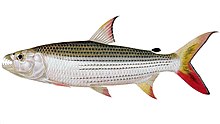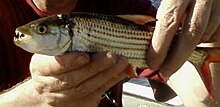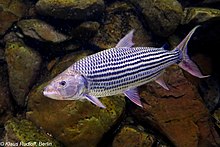
The barn swallow is the most widespread species of swallow in the world, occurring on all continents, with vagrants reported even in Antarctica. It appears to have the largest natural distribution of any of the world's passerines, ranging over 251 million square kilometres globally. It is a distinctive passerine bird with blue upperparts and a long, deeply forked tail. In Anglophone Europe, it is just called the swallow; in northern Europe, it is the only member of family Hirundinidae called a "swallow" rather than a "martin".
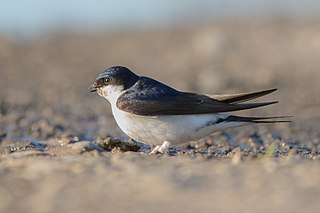
The western house martin, sometimes called the common house martin, northern house martin or, particularly in Europe, just house martin, is a migratory passerine bird of the swallow family which breeds in Europe, north Africa and across the Palearctic; and winters in sub-Saharan Africa and tropical Asia. It feeds on insects which are caught in flight, and it migrates to climates where flying insects are plentiful. It has a blue head and upperparts, white rump and pure white underparts, and is found in both open country and near human habitation. It is similar in appearance to the two other martin species of the genus Delichon, which are both endemic to eastern and southern Asia. It has two accepted subspecies.

The swallows, martins, and saw-wings, or Hirundinidae are a family of passerine songbirds found around the world on all continents, including occasionally in Antarctica. Highly adapted to aerial feeding, they have a distinctive appearance. The term "swallow" is used as the common name for Hirundo rustica in the UK and Ireland. Around 90 species of Hirundinidae are known, divided into 21 genera, with the greatest diversity found in Africa, which is also thought to be where they evolved as hole-nesters. They also occur on a number of oceanic islands. A number of European and North American species are long-distance migrants; by contrast, the West and South African swallows are nonmigratory.
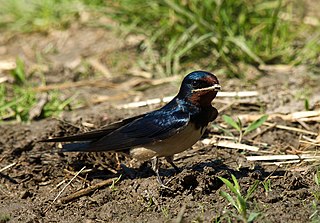
The bird genus Hirundo is a group of passerines in the family Hirundinidae. The genus name is Latin for a swallow. These are the typical swallows, including the widespread barn swallow. Many of this group have blue backs, red on the face and sometimes the rump or nape, and whitish or rufous underparts. With fifteen species this genus is the largest in its family.

Lake Kariba is the world's largest artificial lake and reservoir by volume. It lies 1,300 kilometres (810 mi) upstream from the mouth of the Zambezi river on Indian Ocean, along the border between Zambia and Zimbabwe. Lake Kariba was filled between 1958 and 1963 following the completion of the Kariba Dam at its northeastern end, flooding the Kariba Gorge on the Zambezi River.

The Tanganyika sardine is a term for two related species, both of which are small, planktivorous, pelagic, freshwater clupeid originating from Lake Tanganyika in Zambia. They form the major biomass of pelagic fish in Lake Tanganyika and Lake Malawi, swimming in large schools in the open lake, feeding on copepods and potentially jellyfish. Their major predators are four species of Lates which are also endemic to Lake Tanganyika, and are related to the Nile perch in Lake Victoria. All of these pelagic fish have suffered from overfishing in the last two decades.
Tigerfish can refer to fish from various families, and derives from official and colloquial associations of these with the tiger. However, the primary species designated by the name "tigerfish" are African and belong to the family Alestidae.
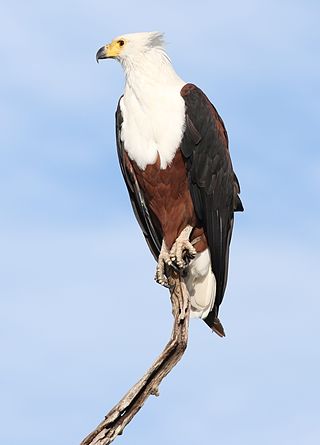
The African fish eagle or the African sea eagle is a large species of eagle found throughout sub-Saharan Africa wherever large bodies of open water with an abundant food supply occur. It is the national bird of Malawi, Namibia, Zambia, and Zimbabwe. As a result of its large range, it is known in many languages. Examples of names include: Vis Arend in Afrikaans, nkwazi in Chewa, aigle pêcheur in French, hungwe in Shona, inkwazi in isiZulu, and ntšhu in Northern Sotho. This species may resemble the bald eagle in appearance; though related, the two species occur on different continents, with the bald eagle being resident in North America.

Hepsetus odoe, the African pike characin, is a predatory freshwater characin belonging to the family Hepsetidae. It was formerly considered that there was a single species of Hepsetus pike characin but recent studies have led to the species being split and Hepsetus odoesensu stricto is the west African representative of the group.

The wildlife of Zimbabwe occurs foremost in remote or rugged terrain, in national parks and private wildlife ranches, in miombo woodlands and thorny acacia or kopje. The prominent wild fauna includes African buffalo, African bush elephant, black rhinoceros, southern giraffe, African leopard, lion, plains zebra, and several antelope species.

Hydrocynus is a genus of large characin fish in the family Alestidae commonly called "tigerfish," native to the African continent. The genus name is derived from Ancient Greek ὕδωρ ("water") + κύων ("dog"). The genus contains five species, all popularly known as "African tigerfish" for their fierce predatory behaviour and other characteristics that make them excellent game fish. Hydrocynus are normally piscivorous, but H. vittatus is proven to prey on birds in flight.

The Lake Tanganyika sardine is a species of freshwater fish in the family Dorosomatidae which was endemic to Lake Tanganyika but which has now been introduced to other lakes in Africa as a food source. It is monotypic within the genus Limnothrissa. It and the Lake Tanganyika sprat are known collectively as kapenta.
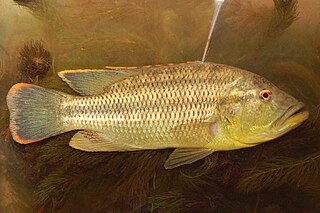
Serranochromis is a genus of relatively large, robust cichlids from freshwater habitats in mainland Southern Africa, ranging as far north as DR Congo and Tanzania, with the highest species richness in the upper Zambezi, Okavango and Congo basins. They are typically known as largemouths or, especially among fishers, breams. Serranochromis are mostly piscivores and they are important in local fisheries.

The vundu is a species of large airbreathing catfish found widely in rivers and other freshwater habitats of sub-Saharan Africa, as well as the Nile. It is also called the sampa, cur, lenda, or certa.

Hydrocynus goliath, also known as the goliath tigerfish, giant tigerfish, or mbenga, is a very large African predatory freshwater fish of the family Alestidae.

Hydrocynus tanzaniae, the blue tigerfish, is a large African predatory freshwater fish.

Hydrocynus brevis, also known as the tigerfish, Nile tigerfish or Sahelian tigerfish, is a predatory freshwater fish distributed throughout Africa.
There are two major sources of fish in Uganda; one is from aquaculture, the other from fishing in rivers and lakes. Different types of fish flourish in different water sources. The waters of Uganda contain an impressive array of fish species—over 90 in all. This count does not include the Haplochromis complex, which itself is made up of more than 200 species.
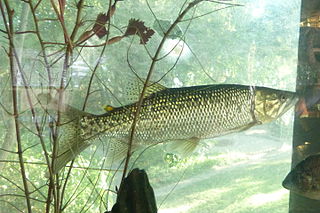
Hepsetus cuvieri, the Southern African pike, African pike or Kafue pike characin, is a predatory species of freshwater ray-finned fish belonging to the monotypic family Hepsetidae, the African pike characins. This fish is found in southern Africa. It was formerly classified within the single widespread African species Hepsetus odoe but this has now been split into a number of valid species.
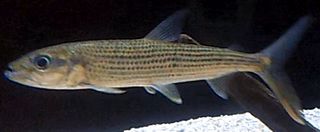
Hydrocynus forskahlii, the elongate tigerfish, is a species of predatory characin from the family Alestidae which is found in northern and western Africa.
